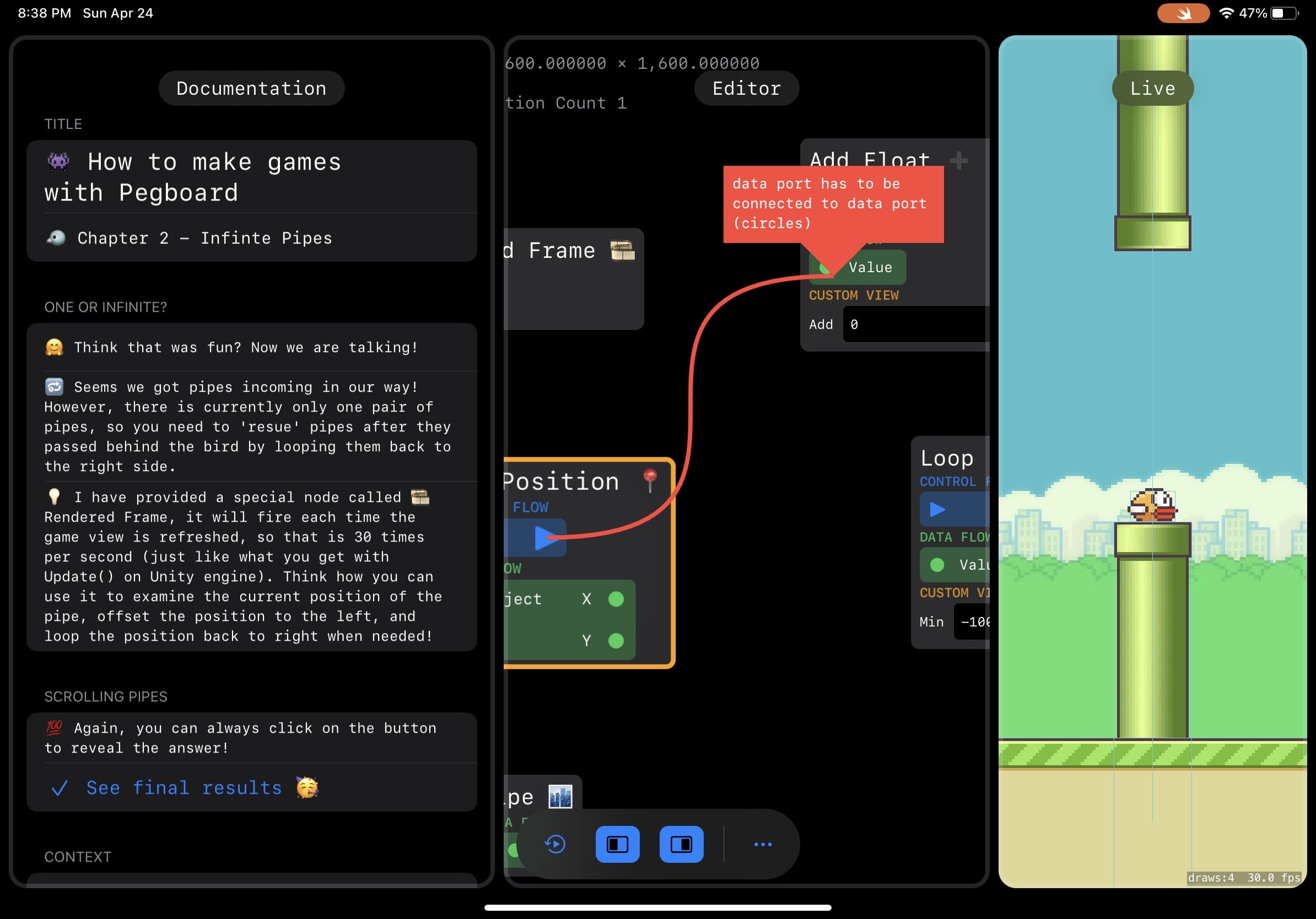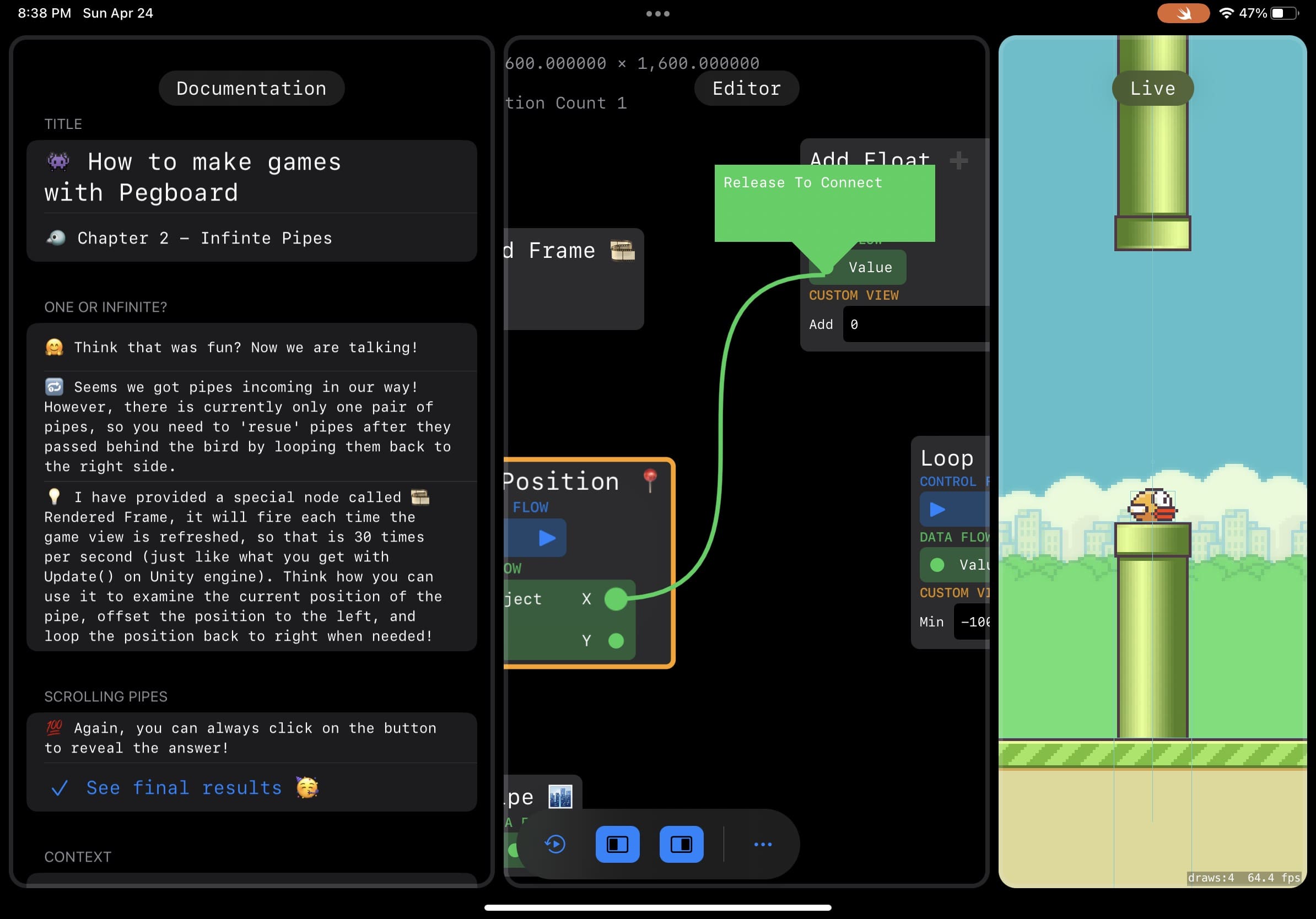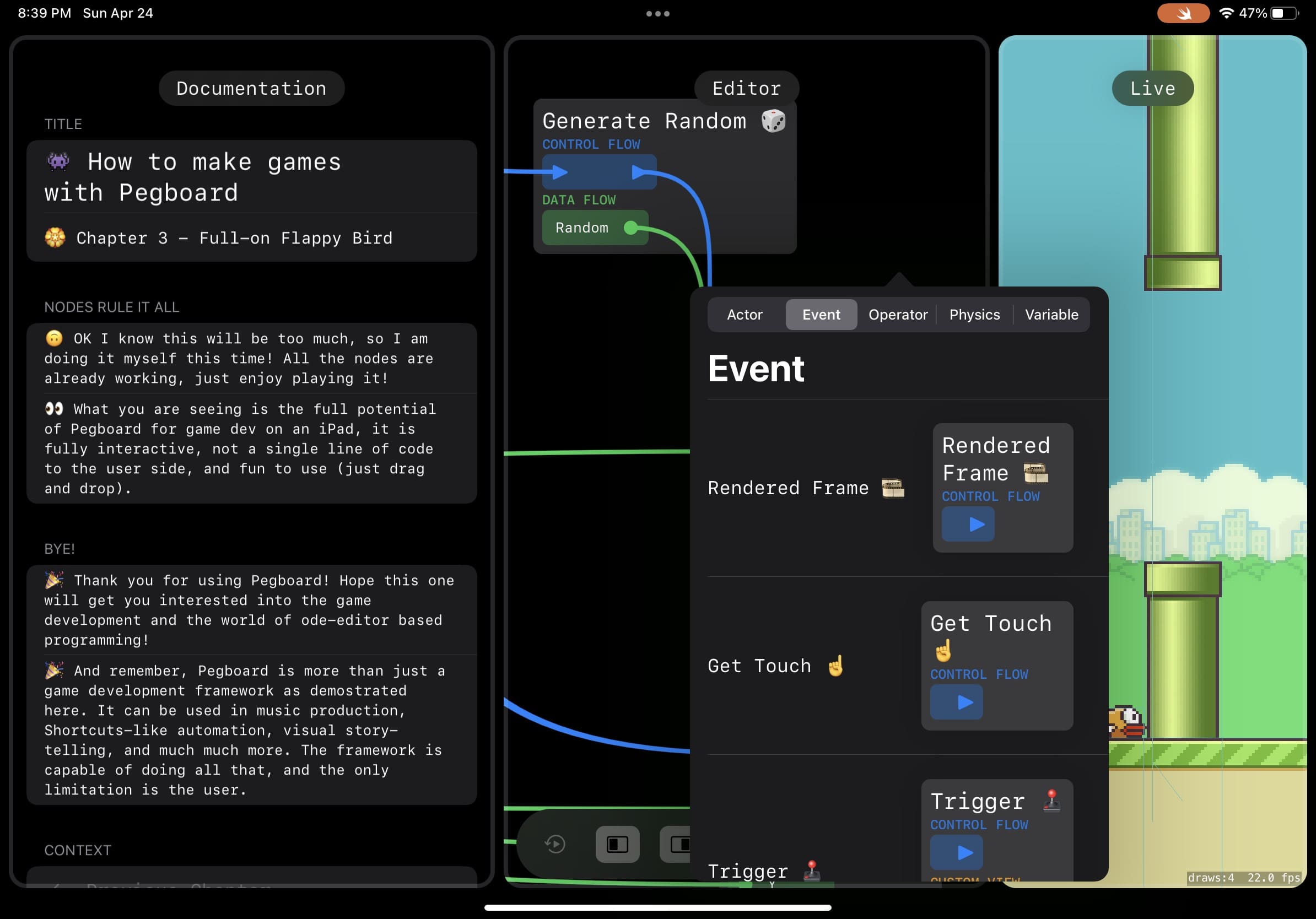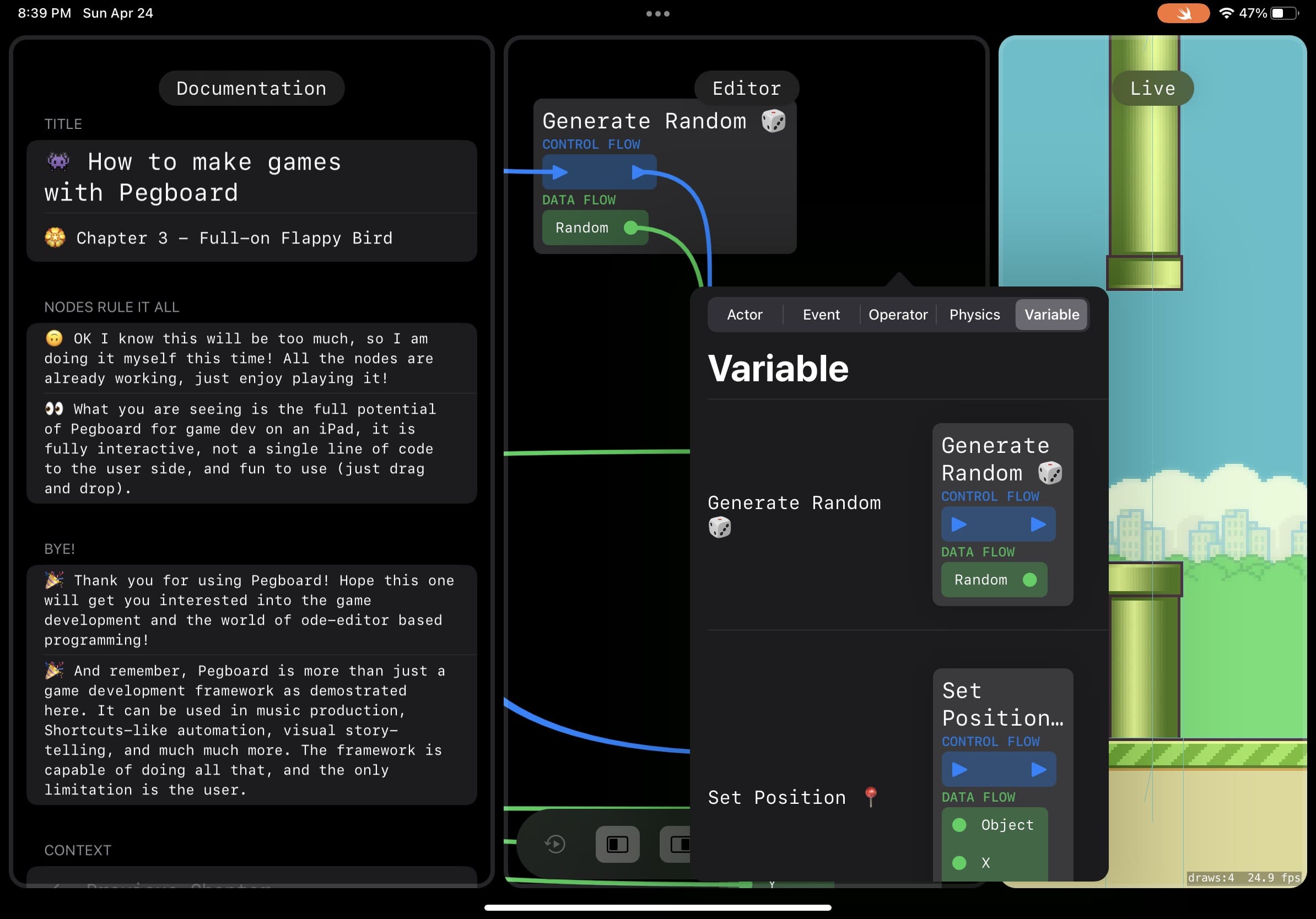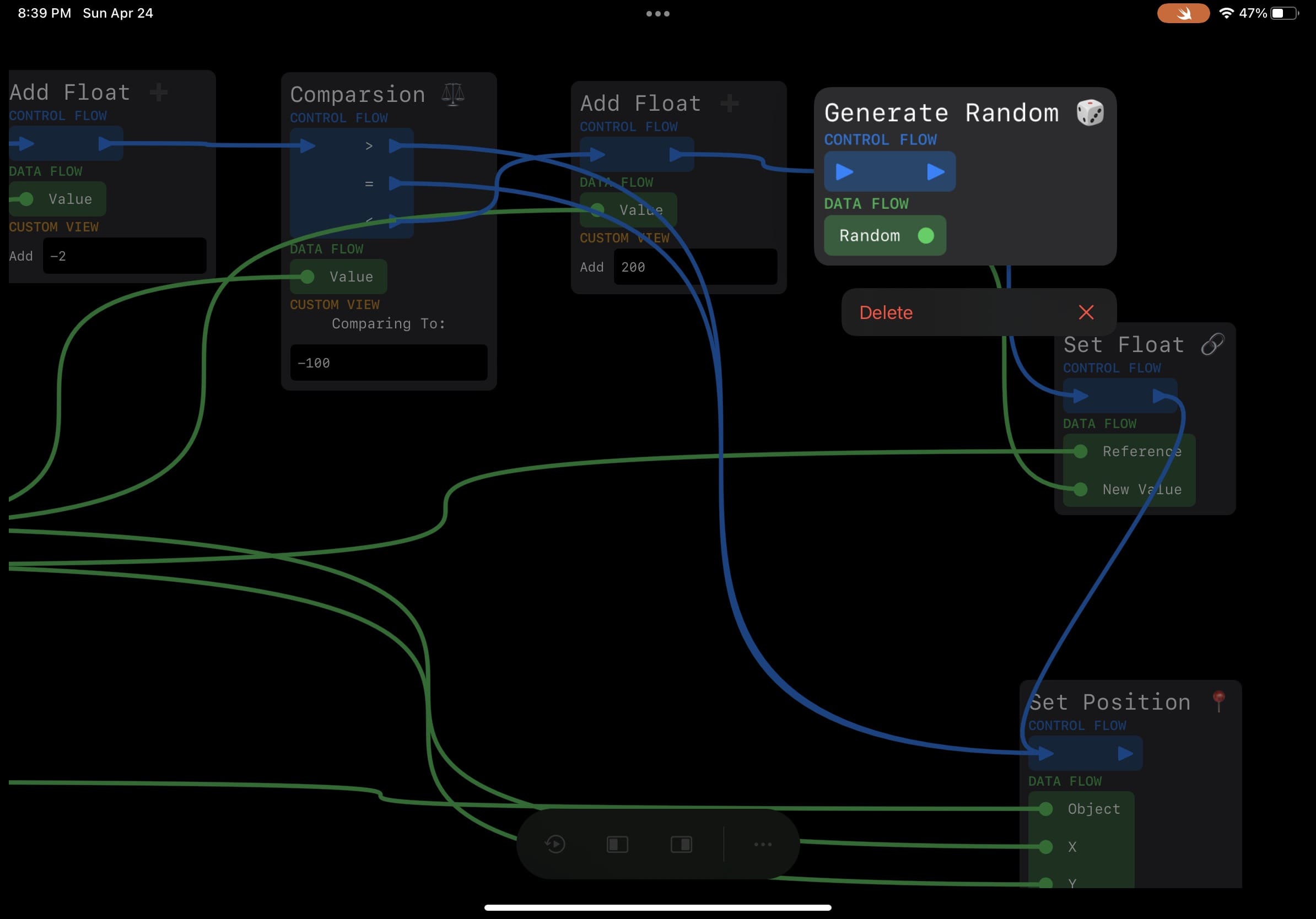About
Pegboard is a Swift Playground app for WWDC 22 Swift Student Challenge. It is a creative workspace with node-based scripting editor built-in and was purely written in SwiftUI.

Video
Why do this
Some people might know me by my WWDC 20 Swift Student Challenge winner submission, Shader Node, and wonder why I made yet another a node editor.
Sure, Shader Node is also a node-based editor running on iOS, and you can find visual similarities between the two. However, Shader Node is a shader editor, the generated shader code is directly fed into SpriteKit and there is nothing more than that, SpriteKit will handle the rendering without our control.
Pegboard, on the other hand, is a scripting editor, the playground not only needs to parse the graph, but to execute it. That is the main difference and will bring up a lot of implications I wouldn't be noticing at the beginning of this project.
Besides, from a retrospective standpoint, Shader Node is 'old' as it was using UIKit and UIKit Dynamics for the interface. I spent a lot of time on working out the layout math when dealing with the node interface. That is no longer a problem with SwiftUI, as the node interface is self-sizing now. The bezier lines now can be drawn using the Canvas API, so it feels like a good time to rewrite my node editor UI in pure SwiftUI.
Why the name
The project used to be named 'script node editor'. Not to say anything wrong with it, but it is at least very boring.
When demonstrating my project, I received a valuable piece of advice from a veteran in the industry, that the project name should be sensible to end users, and should lead to immediate understanding of its target usage.
That is why I changed the name to 'Pegboard', and by Pegboard, I mean the SKÅDIS Pegboard sold at IKEA. Node editor is in some way a metaphor for it: they both function as a canvas, they both have accessories (or nodes, in a digital term) of different functions attached to them. You can move items from one accessory to another, just like you can move data from one node to another.
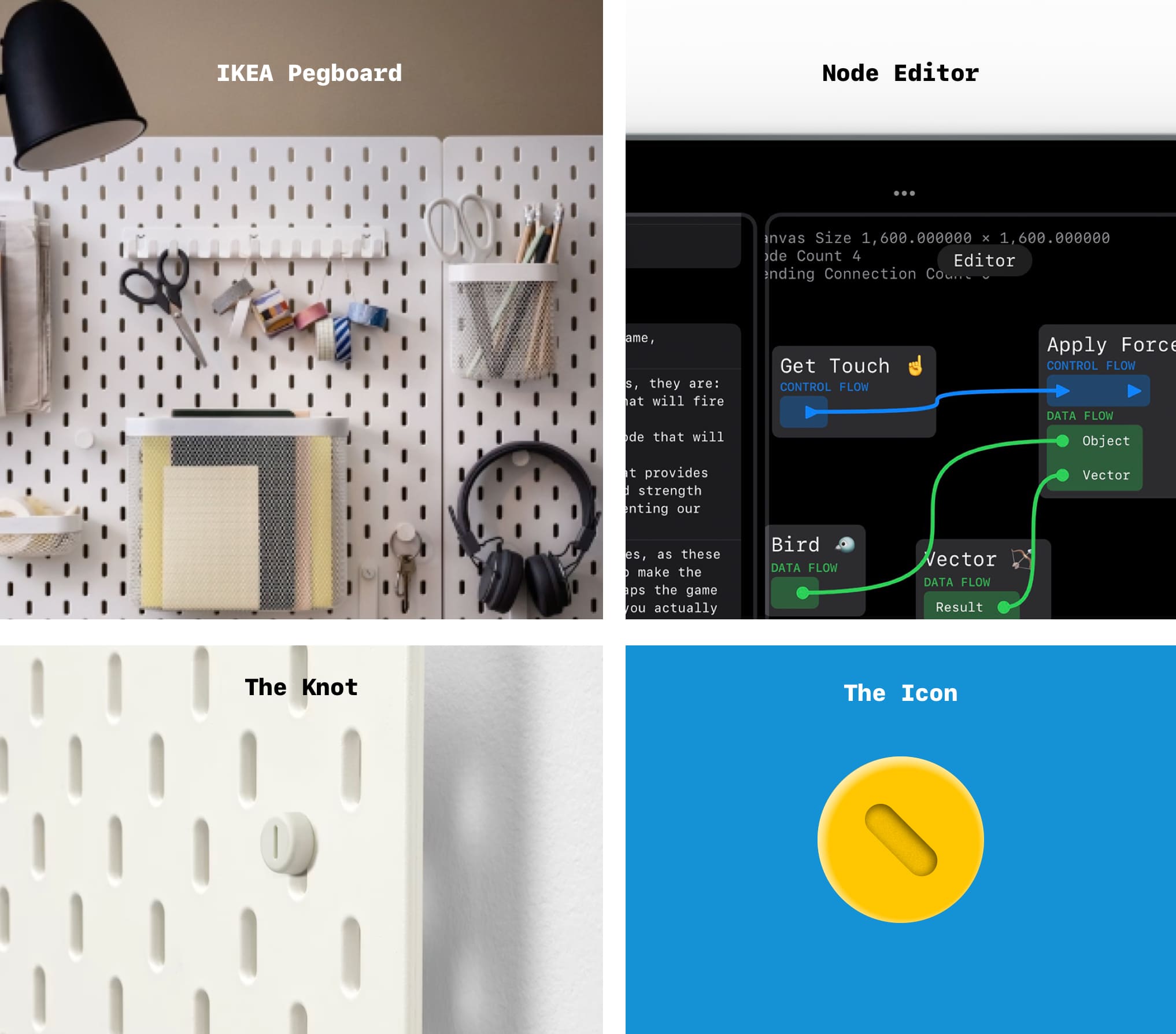
More screenshots
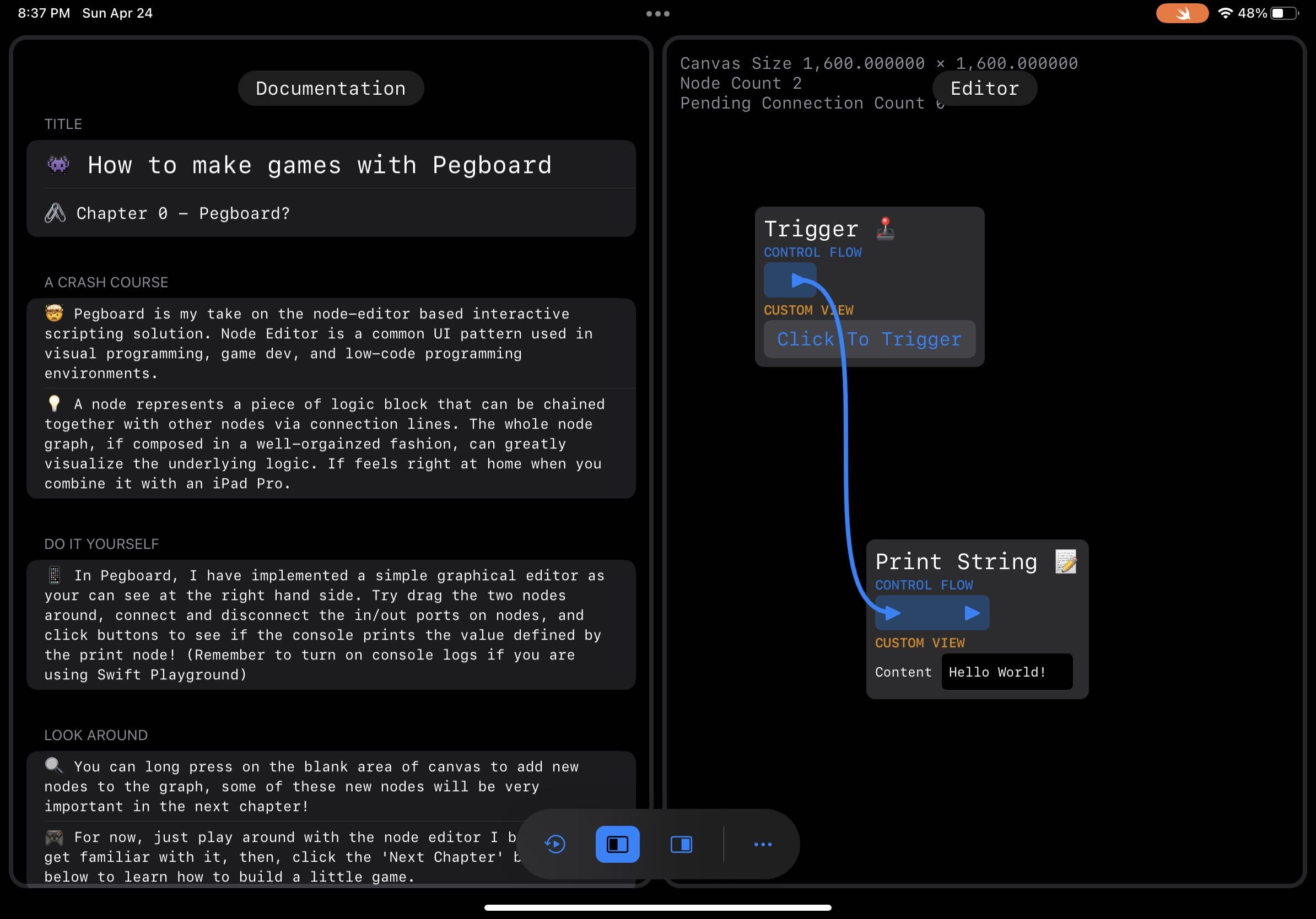
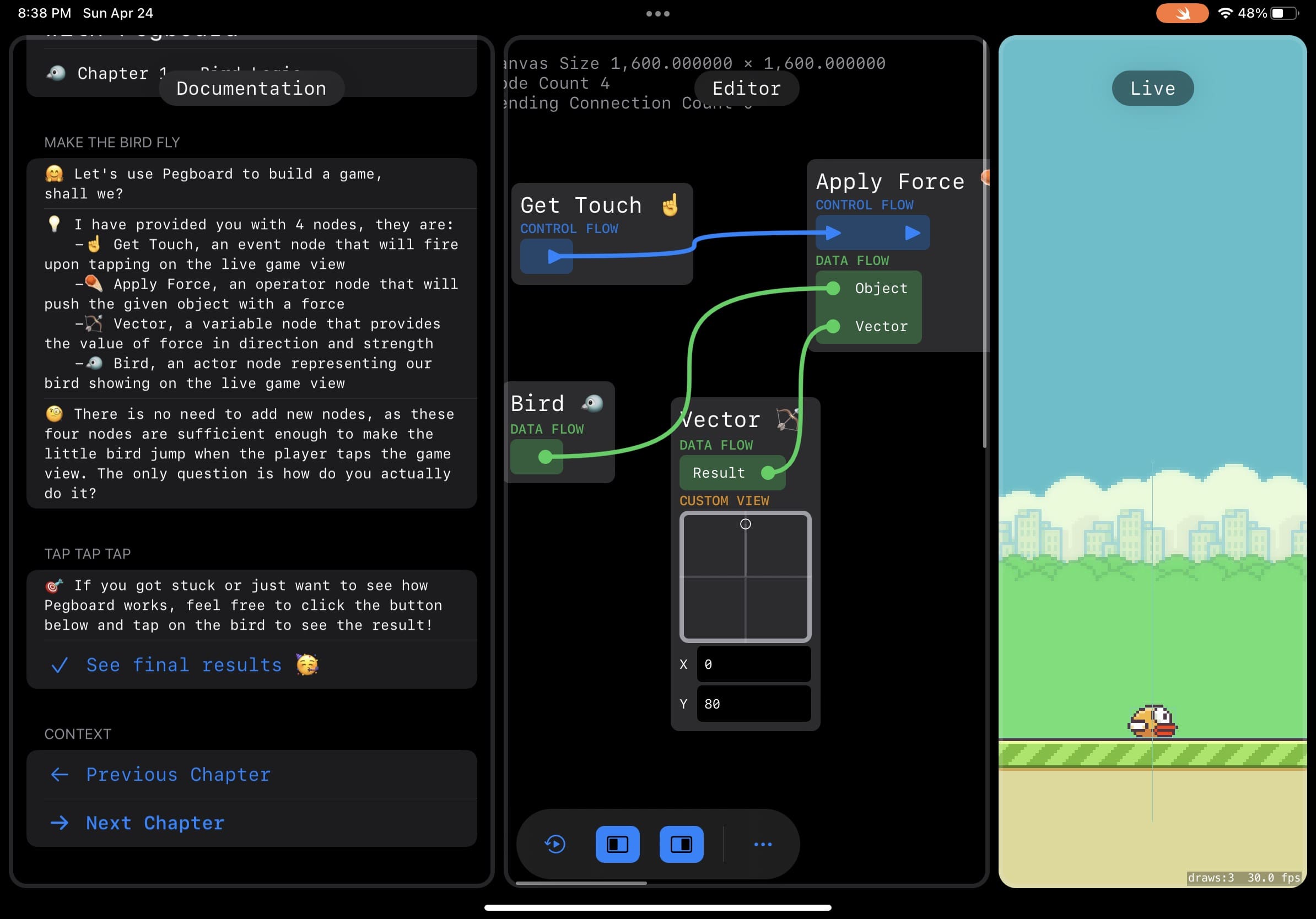
Click to see additional images
